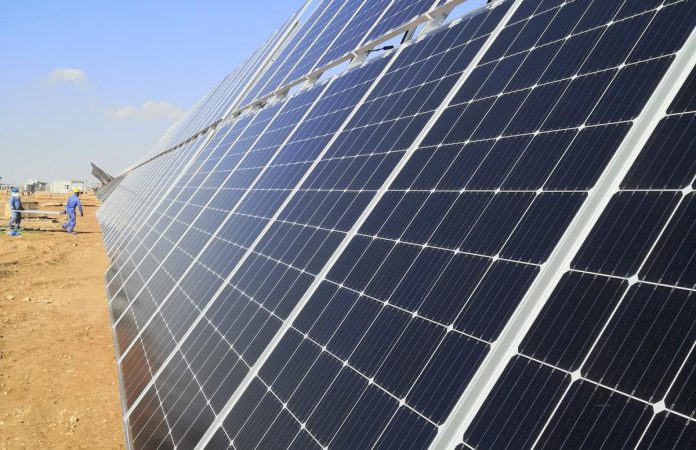Solar project developers in the Middle East are increasingly aware of the potential of n-type PV technology, particularly for bifacial systems, according to Chinese solar manufacturer Jolywood.
The company used the World Future Energy Summit in Abu Dhabi to highlight its claim its 125 MWdc/105 MWac project in Oman is evidence the value proposition of n-type technology is being demonstrated in the region, despite a price premium on p-type PERC alternatives.
The Oman project being developed near the southern city of Amin deploys Jolywood n-type modules on single-axis trackers supplied by Chinese manufacturer Arctech. The facility is being developed by Japanese investor Marubeni, with Indian business Sterling and Wilsonproviding engineering, procurement and construction services.
The 125 MW array, set for completion this month, is the first large scale solar project in Oman.
Advantages
“Here in the Middle East, the conditions are very fierce [with temperatures] as high as 60-70 degrees Celsius on the ground,” said Jolywood’s head of international sales Alfred Liu. “In the high temperature conditions, n-type enjoys many more advantages, with a temperature coefficient [of] 0.32%, against 0.38% in p-type PERC.”
Jolywood deploys tunnel oxide passivated-contact (TOPCon) n-type cell technology in its modules and claims to be able to hit 415 W in a 72-cell module with an efficiency of 20.66%. With n-type products inherently free from light-induced degradation, the technology also offers a low degradation rate, with its products guaranteed to deliver 87.4% of their initial power output after 30 years. Jolywood also claims a bifacial factor of 85% for its panels.
“Here in the Middle East the sand is highly reflective, so it is like a ‘gift from god’ to use bifacial [technology], added Liu. “Among bifacial, n-type technology stands out.”
Jolywood also announced it has expanded its annual PV module production capacity from 1 GW to 3 GW.






